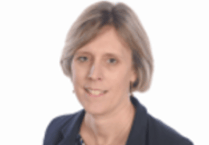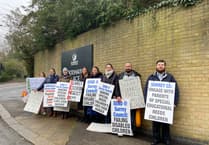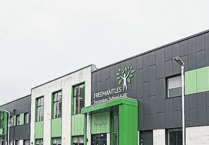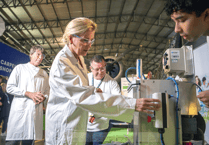THE imposing Inkerman Barracks at Knaphill was home to many regiments and units over the years. There was even a school for senior officers from the various arms of the services.
The first buildings on the site were opened in 1859 as a prison for invalid male convicts. A prison for female convicts opened in 1869.
Covering 63 acres with a wall 18 feet high, the two prisons combined held an average of 650 inmates at any one time.
The male prison was closed in March 1889, with the female facility shutting in November 1895. The buildings were then handed over to the War Office.
The male prison was converted into barracks and in 1892 became home to the 2nd Battalion of the Queen’s (Royal West Surrey) Regiment. The barracks was named after the Battle of Inkerman that took place during the Crimean War.
Previous stories in Peeps into the Past about Inkerman Barracks have noted the following regiments stationed there: the Royal Scots, Royal West Sussex, Royal Warwickshire, Royal Welch Fusiliers, and, during the First World War, troops from South Africa.
Also during the First World War part of the barracks was used as a military hospital.
In 1947 it became a training depot for the Royal Military Police (RMP). At any one time, more than 400 recruits were there on their initial three-month training course.
The RMP moved to new barracks that opened in Chichester in 1964-5 and in 1970 Inkerman Barracks closed for good and was then demolished. The site was acquired by Woking Borough Council, in conjunction with The Guinness Trust. They began a house building programme that lasted from the 1970s to the 1990s.
News & Mail reader Trevor Howard has been looking into the history of the Senior Officers’ School and has supplied some details.
The school was established in 1916 by Brigadier-General Reginald John Kentish for the training of Commonwealth senior officers of all services.
The school was originally intended for senior officers of the British Army who aspired to battalion command and to ensure that all candidates received suitable training. It was taken as an affront by some senior officers of the day, who resented the implication that they were incapable of delivering the necessary training.
The school was based at North Camp, Aldershot, during the First World War but moved to Inkerman Barracks in 1919, where the first course was held between 15 October and 28 November. By 1921 a fifth course had been added for officers from the Royal Navy and the Royal Marines.
A golf match was played on a regular basis between the school and Members of Parliament from the House of Commons.
However, in 1924, the school was evicted from Inkerman as accommodation was needed for other troops, and transferred to Sheerness, Kent. Finally, the school moved to Erlestoke Park in Wiltshire in 1939, where it continued to operate until its closure in 1961.
Today similar officer training is conducted at the Joint Services Command & Staff College at Shrivenham in Oxfordshire.
Woking at Work talk at The Lightbox
Woking at Work is David Rose’s brand-new illustrated talk. It is being hosted by The Lightbox online via Zoom as a fundraiser for the arts and heritage centre.
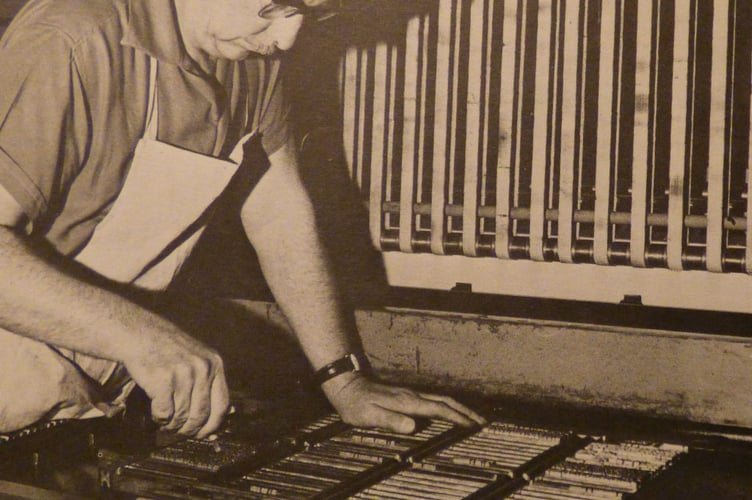
The talk takes a look at businesses in the town over the past 100 years including engineering firms such as James Walker, GQ Parachutes, the Sorbo rubber factory and printers Unwins.
The spotlight will also fall on railway, gas and electricity workers, shopkeepers, timber merchants and nurserymen.
The talk is on Wednesday 17 February, 1pm to 2pm. Tickets are £8 or free to Lightbox members. Book online at https://www.thelightbox.org.uk/Event/woking-at-work
Picture captions:
Inkerman Barracks aerial view.jpg
A bird’s eye view of Inkerman Barracks at Knaphill
If you have room for a picture or two to go with my Woking at Work talk…..
Unwins printers compositor.jpg
Railway inside Woking signal box.jpg
If you have some memories or old pictures relating to the Woking area, call me, David Rose, on 01483 838960, or drop a line to the News & Mail.
David Rose is a local historian and writer who specialises in what he calls “the history within living memory” of people, places and events in the west Surrey area covering towns such as Woking and Guildford. He collects old photos and memorabilia relating to the area and the subject, and regularly gives illustrated local history talks to groups and societies. For enquiries and bookings please phone or email him at: [email protected]

